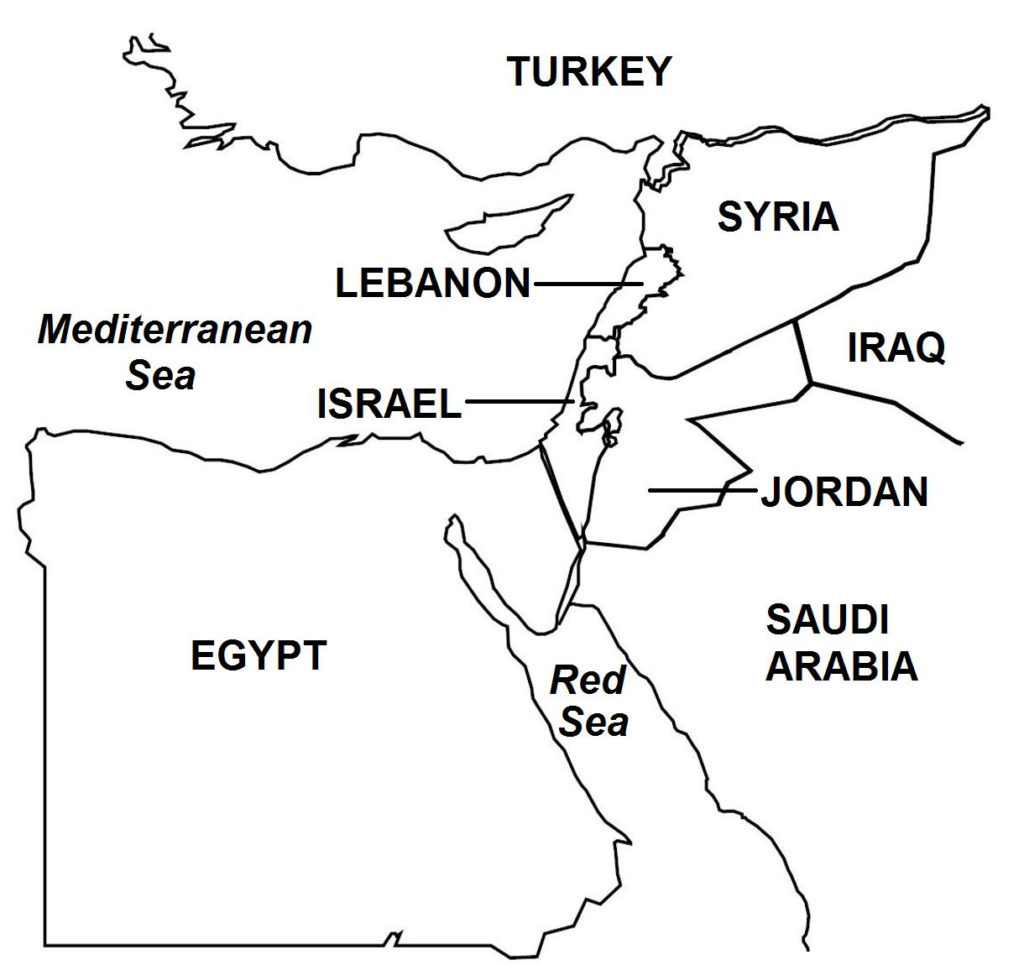
(Taken from 1982 Lebanon War – Wars of the 20th Century – Volume 3)
On August 18, 1982, after a seven-week siege of the Lebanese capital Beirut, Israel, Lebanon, and the Palestinian Liberation Organization (PLO) agreed to a ceasefire, which was made about through mediation efforts of U.S. Special Envoy Philip Habib. The ceasefire contained the following stipulations: an end to the war, departure of all foreign forces from Lebanon, and establishment of a Multinational Forces (MNF) to enforce the ceasefire. On August 21, 1982, the MNF, which ultimately consisted of contingents of the armed forces of the United States, France, Italy, and Britain, arrived in Beirut. With security protection provided by the MNF, over 6,000 PLO fighters left Beirut and transferred to Jordan, Syria, Iraq, Sudan, Yemen, Greece, and Tunisia. The operation was carried out over 15 days starting on August 27, with PLO Chairman Yasser Arafat leaving on August 30 aboard a merchant ship bound for Tunisia.
The Israeli government put pressure on new Lebanese president, Bachir Gemayel, to enter into a peace treaty with Israel. President Gemayel refused, as the Lebanese Civil War was still ongoing and the continued presence of the Syrian Army threatened the local political and security climates. On September 14, President Gemayel was assassinated. The next day, Israeli forces occupied Muslim-dominated West Beirut, and blocked off escape routes from the area. A Christian militia associated with the assassinated president entered the Sabra and Shatila refugee camps (supposedly to arrest PLO fighters who still remained in the city) and carried out widespread violence against the residents. Various estimates put the number of casualties for the attacks at between 800 and 3,500 persons killed. In December 1982, the United Nations General Assembly, voting 123 – 0 (with 22 abstentions and 12 non-voting), condemned the attacks, calling them “genocide”.
The massacre was denounced also in Israel. A fact-finding investigation by the Israeli government (called the Kahan Commission) determined that Israel’s Defense Minister, the armed forces chief of staff, and Director of Military Intelligence, were negligent in their duties to prevent the killings. Because of foreign and local pressures, Israeli forces withdrew from Beirut, and the MNF, which had left Lebanon on September 11, 1982 after the PLO withdrawal, returned to Beirut for peace-keeping duties. Ultimately, however, the MNF would leave Lebanon permanently in March 1984 following bomb attacks on the U.S. Embassy and on the American and French MNF barracks, all in Beirut.
Israeli Occupation of South Lebanon By the summer of 1983, Israel continued to occupy central Lebanon. In January 1985, Israel withdrew most of its troops from Lebanon, leaving a small force in South Lebanon to protect, together with Israel’s Christian ally, the South Lebanon Army (SLA), a narrow strip of land that the Israelis called the “security zone”. The Israelis and SLA installed check points and outposts in strategic areas along the security zone to cut off guerilla infiltration routes from South Lebanon into northern Israel.
In 1985, a Palestinian armed group called Hezbollah was formed in South Lebanon in opposition to the occupation and with the intent of driving away the Israelis from Lebanon. Hezbollah grew rapidly and filled the armed void left by the PLO by attacking Israeli forces and their allies in South Lebanon as well carrying out cross-border attacks in northern Israel.
In July 1993, a Hezbollah rocket attack in Israel and the killing of five Israeli soldiers prompted Israel to launch a major offensive in South Lebanon (called Operation Accountability). In a scorched-earth campaign, the Israelis destroyed thousands of homes, turning some 300,000 Lebanese civilians into refugees. Then again in April 1996, in response to Hezbollah artillery attacks in northern Israel, Israeli forces launched air strikes and artillery bombardment (Operation Grapes of Wrath) on Hezbollah targets in South Lebanon.
After 15 years, Lebanon’s civil war ended with the Lebanese government’s implementation of the Taif Agreement. Local public opinion mounted in Israel against the continued occupation of South Lebanon. In May 2000, Israel withdrew its forces from South Lebanon in compliance with United Nations Security Council (UNSC) Resolution 425. As a result, Hezbollah gained full control of South Lebanon and continued to launch attacks on Israel.
After the civil war, Lebanon began the task of rebuilding its devastated economic and social infrastructures. Local and international pressures mounted against the continued military and political control of Syria on Lebanon’s internal affairs. Then in April 2005, in compliance with UNSC Resolution 1559, Syria withdrew its forces from Lebanon.
